If you want people to find your ecommerce store, it's important to make sure your product pages are optimized for search engines. After all, what good is having a great product if no one can find it?
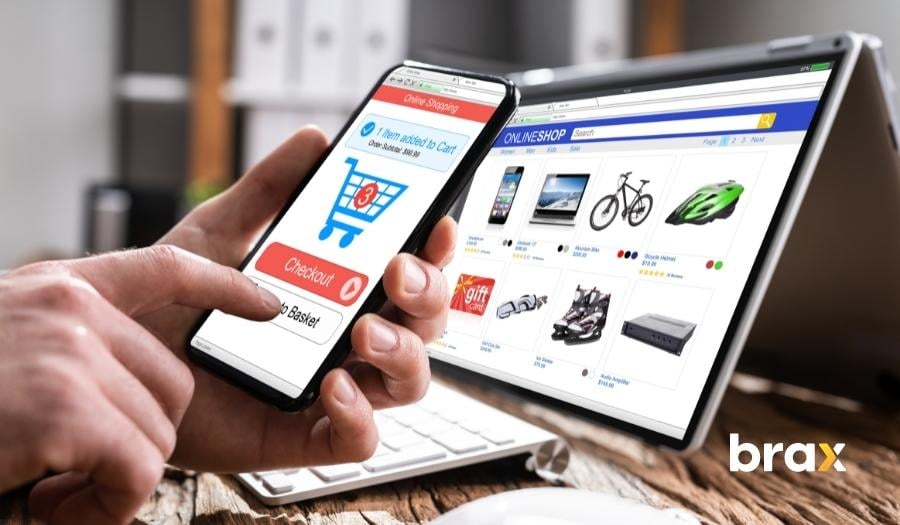
Luckily, optimizing your product page for search engines isn't rocket science. By following a few simple tips, you can ensure that your products are easy to find and that potential customers are able to learn everything they need to know about them.
But why bother with search engine optimization? Because at the end of the day, ranking high in search engines means more traffic to your site and more sales for your business. So if you're having problems with getting free traffic from search engines, let's discuss the ways to improve your eCommerce product page SEO.
Do eCommerce Sites Need SEO?
Before we even begin, let us first answer the question gnawing at many people's minds: do eCommerce sites really need SEO?
For the uninitiated, SEO stands for “search engine optimization.” It is the process of improving the visibility and ranking of a website or web page in search engine results pages (SERPs).
In other words, it helps your eCommerce site show up higher in search results, making it more likely that potential customers will find and visit your site.
So, do eCommerce sites need SEO? The short answer is yes — but it’s a little more complicated than that. While all eCommerce sites can benefit from SEO, the level of effort and investment required will vary depending on factors like the size and structure of your site, your industry, and your target market.
For example, if you’re selling a niche product to a small geographic area, you may not need to invest as much in SEO as a larger company selling to a wider audience. However, even if you have a small eCommerce site, you should still make sure your site is properly optimized for search engines. Otherwise, you could be missing out on valuable traffic and sales.
In short, all eCommerce sites need some level of SEO — but the amount of effort required will vary depending on the individual site. If you’re not sure where to start, we suggest working with an experienced SEO consultant or agency to develop a customized plan for your eCommerce business.
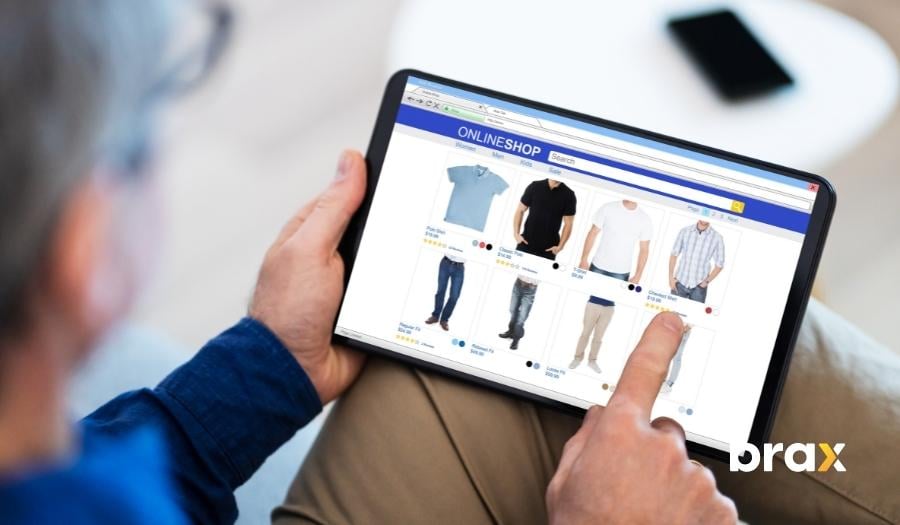
The Basics and Best Practices of eCommerce Product Page SEO
eCommerce product page SEO can be a bit of a mystery. Before you can even think about optimization, you need to understand the basics of how eCommerce product pages work.
A product page is a page on your site that contains information about a specific product or group of products. It typically includes things like the product name, price, photos, descriptions, and user reviews.
When done right, eCommerce product pages are designed to help shoppers find the products they're looking for and make informed purchase decisions. If you're selling products online, you want to make sure your product pages are optimized for search engine visibility. After all, what good is a great product if no one can find it?
If you're just getting started with eCommerce product page SEO, here are the basics you need to know:
1. Use keyword-rich titles and descriptions.
Crafting the perfect title and description for your eCommerce product pages can feel a bit like art, a bit like science, and a bit like magic. You want to find the right balance of keywords and creativity to accurately describe your product, while also making it stand out from the competition.
The good news is, there are a few tried-and-true tips that can help.
First, make sure your title is short, sweet, and to the point. Second, use relevant keywords throughout your description (but don't stuff!) to ensure that your product page comes up in relevant searches.
Finally, don't forget to use strong action verbs and engaging language to really sell your product. By following these simple tips, you can create a product page that is both informative and eye-catching.
2. Optimize for Long Tail Keywords
Following what we said, you need keywords. But not just simple keywords, but long-tailed ones. Long tail keywords are simply a mix of multiple words that when combined, target a very specific niche audience.
"Buy wooden shelves online" is an example of a long tail keyword. When it comes to SEO, going after long tail keywords can be extremely beneficial for eCommerce product pages.
For starters, long tail keywords tend to have less competition than shorter, more general keywords. This means that it'll be easier to rank for a long tail keyword than, say, "buy shelves."
In addition, long tail keywords are often much more specific than general keywords, which means that they're more likely to result in a sale. After all, if someone is searching for "buy wooden shelves online," they're probably further along in the buying process than someone who is simply searching for "wooden shelves" or "buy shelves."
Finally, optimizing for long tail keywords can help you to attract a more targeted audience. By targeting a specific group of people with your product page, you're more likely to appeal to their needs and interests, which could lead to increased conversion rates.
So how do you go about optimizing your eCommerce product pages for long tail keywords? First and foremost, do your research. Use keyword tools like Google AdWords Keyword Planner and Google Trends to identify popular long tail keywords related to your products.
Once you've identified a few potential keywords, incorporate them into your product page titles and descriptions. By taking these simple steps, you can dramatically improve your eCommerce product pages for SEO and start attracting more targeted traffic.
3. Create unique and compelling content.
Great product pages are the key to success for any eCommerce store. In order to rank highly in search engines and convert visitors into customers, your product pages need to be informative, well-designed, and user-friendly. One of the most important elements of a successful product page is compelling content.
Your product descriptions, titles, and images should all work together to give potential customers a clear idea of what your product is and why they need it.
Good content is equivalent to a great product description, describing its features and benefits, providing interactive images and videos, and other engaging content. Here's an example of a really good product page, and it's from none other than Apple.
It has a good mix of interactive content, engaging visuals, descriptive text, and so much more.
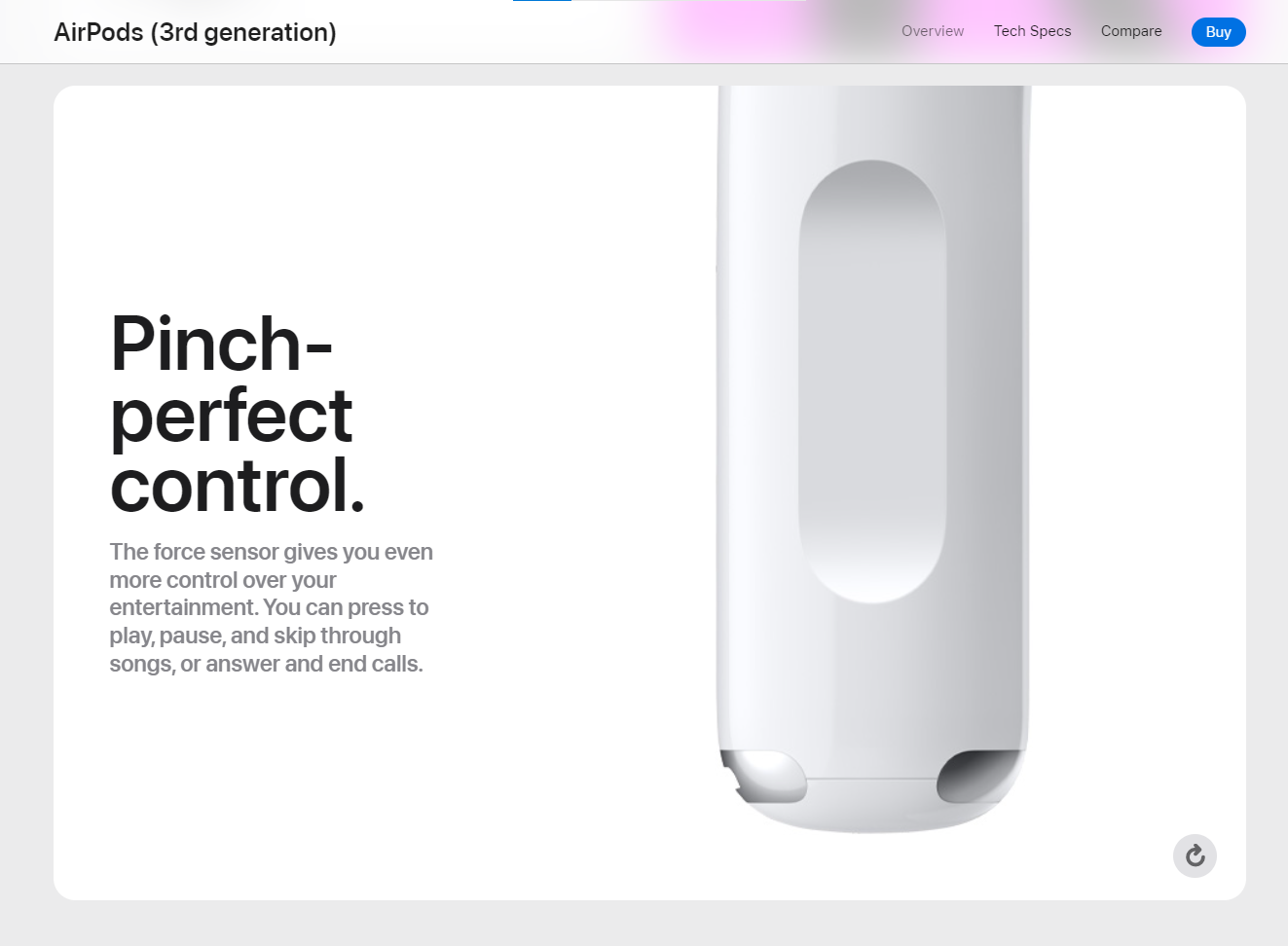
In addition to unique and compelling content, your product pages should also be designed with the user experience in mind. Make sure your pages are easy to navigate and visually appealing. Include high-quality images and videos, as well as detailed information about each product. If your product pages are well-designed and user-friendly, you’ll be more likely to convert visitors into customers.
4. Use high-quality images.
Images are an important part of any e-commerce product page. They provide potential customers with a visual representation of your product, and can make or break their decision to purchase. But what many e-commerce businesses don't realize is that images can also be used to improve your SEO. By optimizing your images for the search engines, you can make your product pages more visible and increase your chances of ranking higher in the SERPs.
Here are a few tips for optimizing your images for SEO:
-
Use descriptive filenames.
When uploading images to your site, make sure to use descriptive filenames that include keywords relevant to your product.
-
Use alt text.
Alt text is the text that appears when an image can't be displayed. It's also used by search engines to index images, so it's important to include keywords in your alt text.
-
Resize and compress images.
Large images can slow down your website, so make sure to resize and compress them before uploading. You can also use a plugin like WP Smush to automatically optimize your images for the web. But make sure you don't just upload a low-quality image, or else that might hurt your conversion rate.
5. Optimize for page speed.
It's no secret that potential customers are more likely to abandon a product page that takes too long to load. In fact, a recent study found that even a one-second delay can lead to a 7% decrease in conversions.
Given the importance of page speed, it's surprising how many ecommerce businesses still haven't made optimizing for speed a priority. If you're looking to improve your product pages SEO, here are a few things you can do to make sure your pages load quickly and efficiently:
-
Reduce the number of HTTP requests
Every time a browser needs to fetch data from your server, it has to send an HTTP request. By reducing the number of requests, you can reduce the amount of time it takes for your pages to load.
-
Minify CSS and JavaScript
Minifying is the process of removing all unnecessary characters from code, such as whitespace, comments, and block delimiters. This can help reduce the size of your CSS and JavaScript files, which will help your pages load faster.
-
Use a content delivery network (CDN)
A CDN is a network of servers that deliver content to users based on their geographic location. Using a CDN can help improve page speed by reducing the distance between your server and your visitors. One of the best CDNs to use is CloudFlare, more so since it offers a free plan.
-
Leverage browser caching
When a visitor loads a page on your site, their browser stores certain files on their computer so they don't have to fetch them from your server every time they want to load a page. Leveraging browser caching allows you to specify how long these files should be cached, so your pages will load faster for repeat visitors.
6. Improve the meta tags.
One of the most important aspects of SEO is the use of meta tags. Meta tags provide information about your page to search engines, and they can be a powerful tool for improving your ranking. However, meta tags are often misunderstood or misused.
Meta tags are HTML elements that provide information about a web page. There are four major types of meta tags: title tags, meta descriptions, meta keywords, and robots tags.
Title tags and meta descriptions are the most important meta tags for SEO purposes. Title tags appear in the title bar of your browser and in the listings on search engine results pages (SERPs). They should be descriptive and keyword-rich, but they shouldn't be too long.
Meta descriptions appear below your title tag on SERPs. They should be brief and should accurately describe the content of your page. Meta keywords are not as important as they once were, but they can still be useful for helping search engines understand the topic of your page. Robots tags tell search engines whether or not they should index a page or follow its links.
Meta tags are just one part of SEO, but they're an important part. If you want to improve your product pages SEO, make sure you're using accurate and relevant meta tags.
7. Include user reviews and testimonials.
Online shoppers are a skeptical bunch. Before pulling out their credit cards and hitting the "buy" button, they want to know that other people have bought the product and liked it. That's why user reviews and testimonials are so important for e-commerce businesses.
Not only do they provide social proof that your product is worth buying, but they also help to improve your SEO. Search engines like Google often use customer reviews as a ranking factor. So if you're not already incorporating user reviews into your product pages, now is the time to start. Here are a few tips to get you started:
1. Make it easy for customers to leave reviews. Include a link to your product page on your thank-you page or in follow-up emails.
2. Encourage customers to leave detailed reviews. The more information you can provide about a product, the better.
3. Encourage customers to add User Generated Content (UGC). User-uploaded images help make your reviews more authentic, which are appealing to potential customers.
By following these tips, you can start using customer reviews to boost your SEO and improve your conversion rate. You can also help ensure that your product pages are visible to potential customers and generate more sales for your business.

8. Mark-up product pages with structured data.
Structured data is a code that can be added to your HTML, which helps search engines understand the content on your page. By marking up your product pages with structured data, you can ensure that your products appear more prominently in search results and that potential customers can quickly find the information they need when they land on your page.
In addition to helping search engines understand your pages better, marking up your pages with structured data can also help you earn Rich Snippets in Google Search Results. Rich snippets are special search results that include additional information about your pages, such as images, ratings, and reviews. While there's no guarantee that you'll earn rich snippets by marking up your pages with structured data, it's certainly worth a try.
There are a few different ways to mark up your product pages with structured data, but one of the most popular methods is using schema.org. Schema.org is a standard markup vocabulary that you can use to annotate your product pages with information like price, availability, and product descriptions.
You can also use schema.org to markup other types of content on your website, like blog posts and articles. In addition to using schema.org, you can also use other microdata vocabularies to mark up your product pages. However, schema.org is the most widely supported vocabulary, so it's a good idea to start there.
Once you've marked up your product pages with structured data, you can test your markup using Google's Structured Data Testing Tool. This tool will help you to find any errors in your markup so that you can fix them before submitting your pages to search engines.
Optimize your eCommerce Product Page for Brand Awareness
Before starting out optimizing your product pages, you need to know what your purpose is, or else you may end up doing things without a direction and wasting your time and resources. Worse, you may end up gaining traffic but not achieving your goal.
One of the main reasons you might need organic traffic to your product pages and to your website as a whole is for brand awareness.
Most online shoppers these days start their journey with a search engine. Suppose you want to ensure that your products show up when potential customers are looking for them. In that case, it's essential to optimize your product pages and e-commerce website for brand awareness and product awareness.
Brand awareness is all about making sure that your products are associated with your brand in the minds of consumers. This can be achieved through things like optimizing your website for search engine keywords related to your brand, using social media to promote your products, and running targeted advertising campaigns.
Product awareness, on the other hand, is all about making sure that potential customers are aware of the specific products that you offer. This can be achieved through things like optimizing your product pages for relevant keywords, using rich media to showcase your products, and offering detailed product descriptions.
By optimizing for both brand awareness and product awareness, you can ensure that your products are visible to potential customers at every stage of their journey.

What will you get if you optimize for brand and product awareness?
If you optimize with this purpose in mind, you can expect your website and products to appear at the top of searches, which in turn will allow you more clicks.
However, more traffic to your website does not automatically mean more sales! Since the intent is brand awareness, you can expect people who come to your pages to want to simply learn more about the product.
For instance, viral product campaigns that are SEO-oriented may surely encourage a lot of people to visit your website, but it may also mean that the audience is a hit-and-miss. The people who visit may not be your target audience and may not be in the market for what you are offering.
So what do you do if you want to drive more traffic to your product page to increase leads or sales? That's where the next section comes in.
Optimize your eCommerce Product Page SEO for Conversions
If you're running an online store, then you know how important it is to have product pages that are optimized for conversions. After all, no matter how great your products are, you won't make any sales if your website isn't designed to convert visitors into customers.
One of the most important things to keep in mind when optimizing your product pages is that people are looking for information, not just a sales pitch. Make sure that your page provides potential customers with all of the information they need to make a purchase decision. This includes things like product descriptions, customer reviews, and even shipping information. The more information you can provide, the more likely people are to convert.
Another important factor to consider is the design of your page. Keep in mind that people are often overwhelmed by too much choice, so it's important to keep your design simple and easy to navigate. Use clear and concise text, and make sure that your call-to-action is prominently displayed. If you can make it easy for people to find what they're looking for and take action, you'll be well on your way to increasing your conversion rate.
When it comes to optimizing your eCommerce product pages for conversions, one of the most important factors to consider is the use of long-tail keywords. Long-tail keywords are those that are specific to your products and target market, and they tend to have a higher purchase intent than generic keywords.
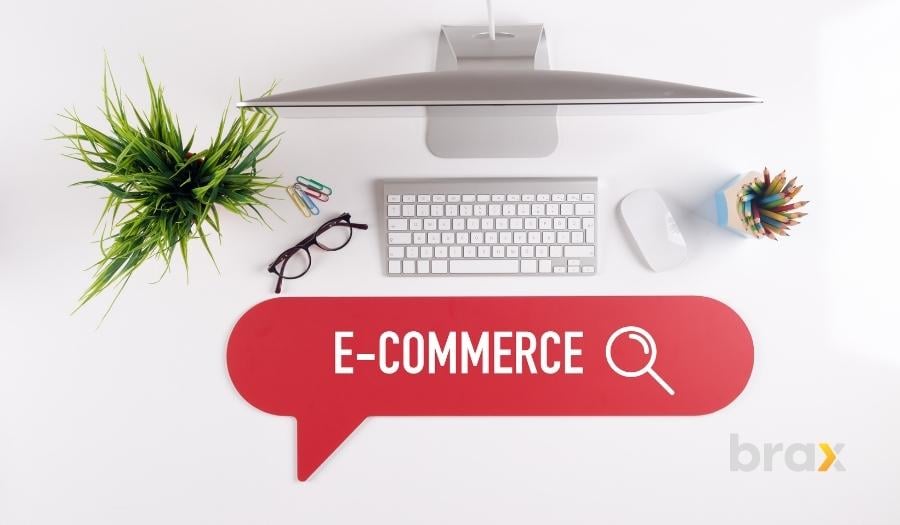
By targeting purchase-intent long-tail keywords, you can ensure that your product pages are seen by people who are actively looking to buy what you're selling. This means that you'll see a higher conversion rate than if you were to target generic keywords.
Another way to find long-tail keywords is by using competitor analysis. You can use tools like SEMrush or Ahrefs to see the keywords that your competitors are targeting, and then use those keywords on your own product pages. This will help you to compete for rankings with your competitors and drive more traffic to your website.
By targeting long-tail keywords, you can ensure that your product pages receive more traffic from people who are actually interested in what you're selling. This increased traffic will result in more conversions and a higher ROI for your eCommerce business.
9 Tools that Help Improve Your eCommerce Product Page SEO
Anyone who has ever tried to do their own eCommerce SEO knows that it can be a tough job. There are just so many things to think about! From making sure your product titles are optimized to finding the right keywords to use in your descriptions, it's easy to get overwhelmed. But never fear — there are plenty of tools out there that can help you out. Here are just a few of the best:
1. Google Keyword Planner
This tool is essential for any eCommerce SEO campaign. It allows you to research which keywords are most popular for your products, so you can make sure you're using the right ones on your product pages.
2. Moz Pro
This all-in-one SEO platform offers a variety of great features, including keyword research, site audits, and competitive analysis. It's perfect for those who want a comprehensive approach to eCommerce SEO.
3. SEMrush
Another great all-in-one option, SEMrush offers similar features to Moz Pro but also includes some additional bells and whistles, like social media management and PPC counseling.
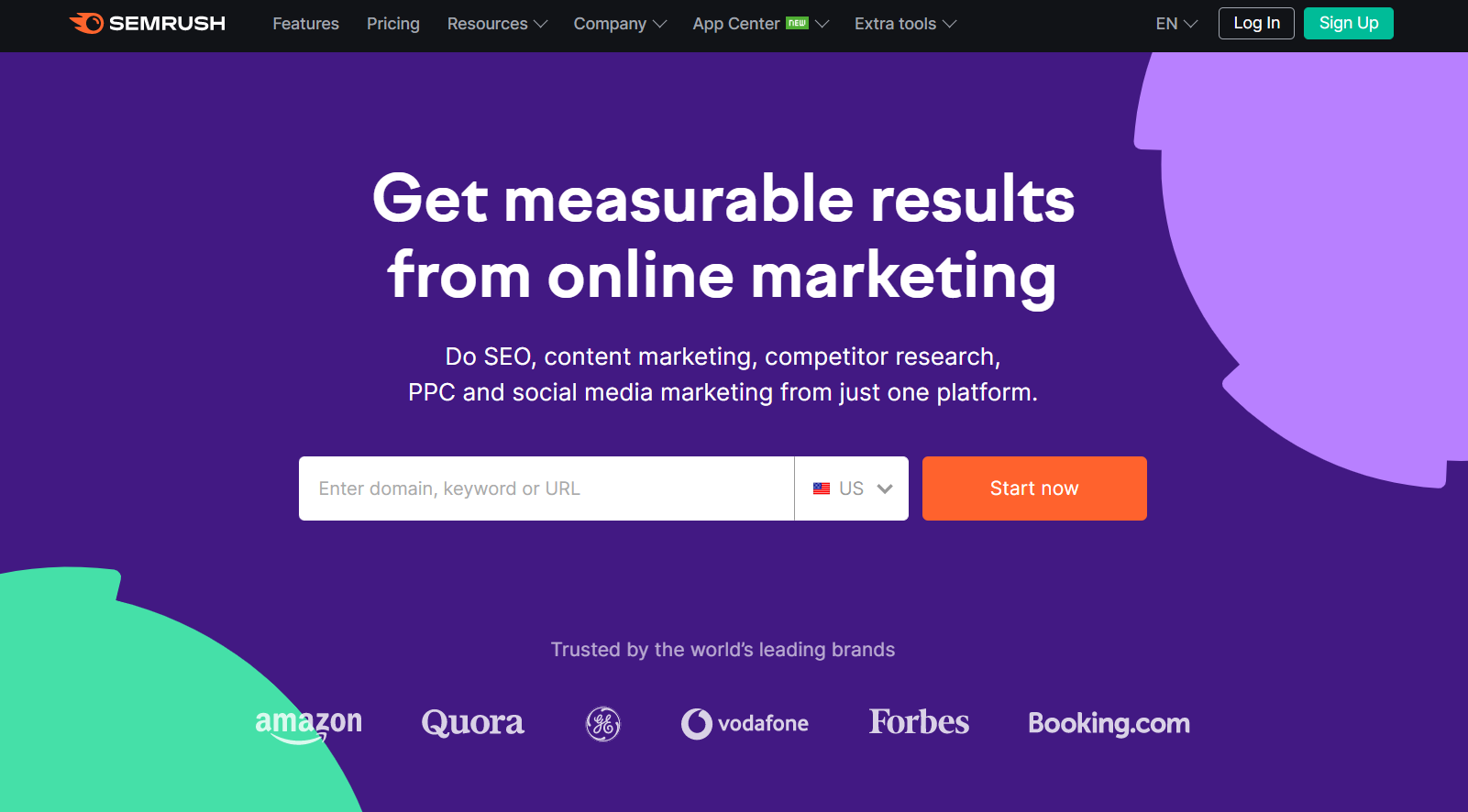
4. Screaming Frog
This tool is ideal for larger eCommerce sites with hundreds or even thousands of product pages. It helps you crawl through your site and identify any potential issues that could be holding back your SEO efforts.
5. DeepCrawl
DeepCrawl is similar to Screaming Frog but goes one step further by also providing detailed insights and recommendations on how to fix any issues it finds. This makes it perfect for those who need a little extra help getting their eCommerce SEO strategy up and running.
6. SurferSEO
This tool is perfect for those who want to get an edge on the competition. It provides detailed insights into what your competitors are doing right (and wrong) with their eCommerce SEO, so you can make sure you're always one step ahead.
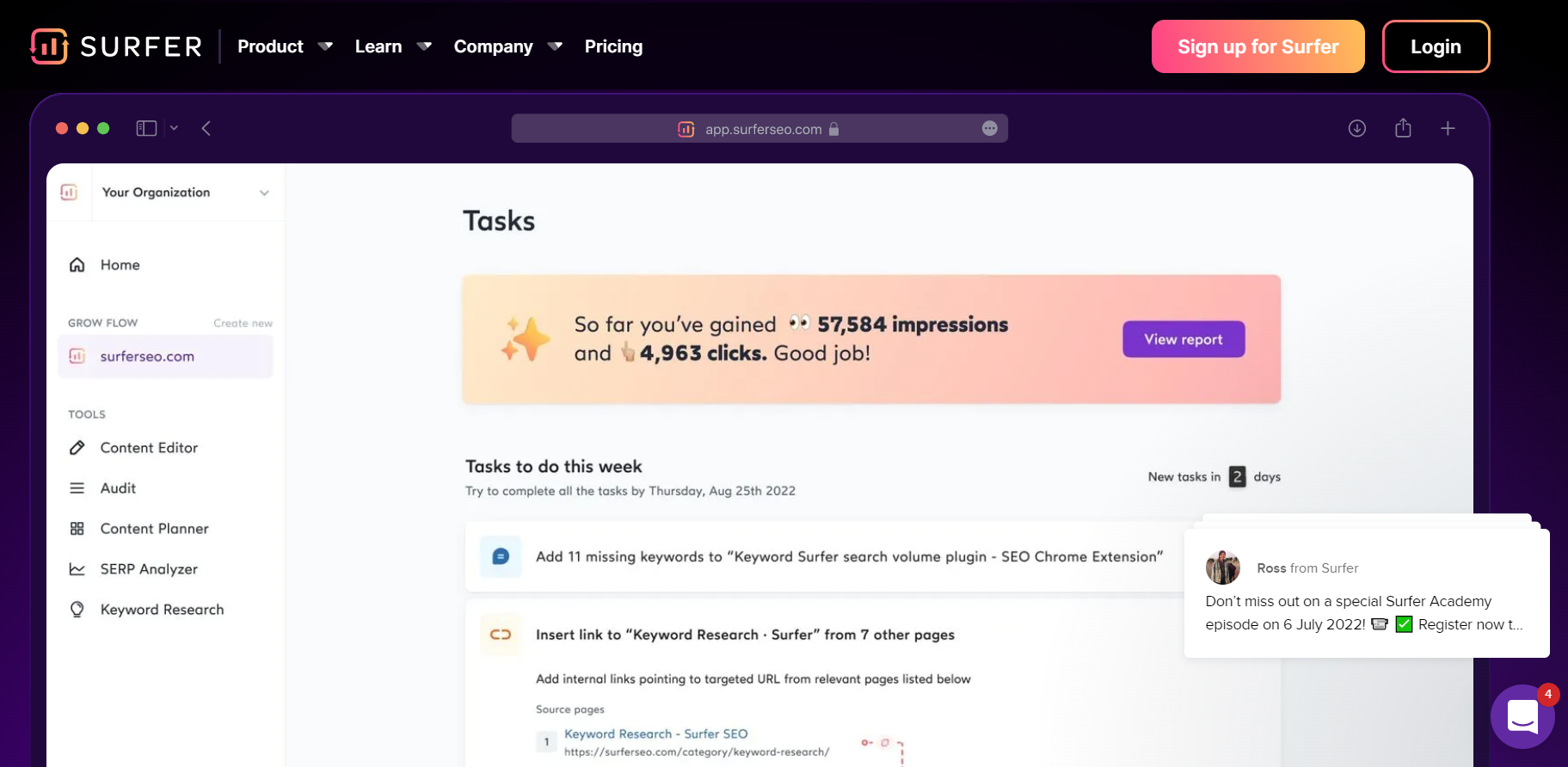
7. Ahrefs
Ahrefs is a powerhouse of an SEO tool, offering features like keyword research, site audits, competitive analysis, and more. It's perfect for those who are serious about taking their eCommerce SEO to the next level.
8. KWFinder
This tool is perfect for small businesses or those just starting out with eCommerce SEO. It's affordable and easy to use, making it a great option for those who are still getting the hang of things. This is also handy when searching for long-tail keywords that not only match your products but also have enough searches to warrant extra effort on your part.
9. Jasper
This is the best tool to pair with SurferSEO. This helps you create interesting product page content that can help encourage your audiences to not just learn about your product but also actually proceed to making a purchase or signing up for a subscription.
Remember that you don't have to use all of these tools — you only need to choose one or combine a couple, or else you'd be out of your wits trying to follow everything without much success.
eCommerce Product Page SEO: Common Mistakes to Avoid
eCommerce product page SEO can be tricky. There are a lot of moving parts, and it's easy to make a mistake that can hurt your ranking. Here are some common mistakes to avoid:
1. Not using the right keyword density.
Keyword stuffing is a surefire way to get penalized by Google, but you also don't want to use too few keywords on your page. Strike a balance by including your target keyword a few times throughout the page without making it sound unnatural.
2. Forgetting to include alt text for images.
Alt text is used by search engines to understand what an image is about, so it's important to include it on your product pages. Otherwise, your images won't be properly indexed which could hurt your ranking.
3. Neglecting internal linking.
Internal links help search engines crawl and index your site, and they also give users an easy way to navigate between pages on your site. So make sure you're linking to other pages on your site from your product pages, using keywords as anchor text when possible.
4. Forgetting about mobile.
With almost 60% of eCommerce traffic coming from mobile devices, it's essential to optimize your product pages for mobile users. This means making sure your pages are loading quickly and accurately on all screen sizes.
With more people than ever using smartphones and tablets to shop online, it's essential that your pages are designed to work well on these devices. Make sure that your pages load quickly and that they're easy to navigate on a small screen. If you can optimize your pages for mobile users, you'll be in a great position to increase your conversion rate.

5. Failing to track your progress.
It’s important to track your progress over time to see how effective your product page SEO strategy is. Use Google Analytics or another similar service to track traffic and conversions from your product pages.
By avoiding these common eCommerce product page SEO mistakes, you'll be well on your way to achieving better rankings and driving more traffic to your site.
What if SEO is not enough?
If you're like most people, you probably think that SEO is the be-all and end-all of online marketing. After all, it's a tried and true method that has been proven to work time and time again.
But what if SEO is not enough? What if your competitors are doing a better job at optimizing their sites than you are? What if your target market is changing and evolving faster than you can keep up with?
Don't despair. There are other ways to market your business online that can be just as effective as SEO, if not more so. Here are three of them:
1. Content marketing
Content is still king when it comes to online marketing. By creating informative, educational, and entertaining content, you can attract new visitors to your site and convert them into customers or clients. And unlike SEO, which can take months or even years to produce results, content marketing can give you an immediate return on your investment.
2. Social media marketing
If you're not using social media to promote your business, you're missing out on a vast potential customer base. With platforms like Facebook, Twitter, and LinkedIn, you can reach new people in your target market and build relationships with them. Just make sure that your content is interesting and valuable, or else you'll risk turning off potential customers.
Or you can also use social media advertising like Facebook ads, Instagram ads, and Tiktok Ads to drive viewers to your eCommerce store.
3. Pay-per-click advertising
Pay-per-click (PPC) advertising is a great way to get your site in front of people who are already looking for what you have to offer. And unlike SEO, which can take time to generate results, PPC advertising can give you an immediate return on your investment. Just make sure that you use relevant keywords and target your ads carefully, or else you'll end up wasting money on clicks from people who will never convert into customers or clients.
4. Native advertising
Native advertising is a form of online advertising that blends in with the content on the site where it's displayed. Unlike banner ads or other types of online advertising, native ads are less intrusive and more likely to be clicked on by users. Just make sure that your native ads are relevant to your target audience and offer something of value. If you need assistance with native advertising (or even social media marketing), we at Brax have your back, so don't hesitate to contact us.
By diversifying your online marketing strategy, you can ensure that you're reaching as many potential customers as possible. And who knows, you may even find that one of these other channels is more effective for you than SEO. So don't be afraid to experiment and see what works best for your business.
SEO is a great way to market your business online. But it's not the only way. If you do not see the results you want from SEO, don't despair. There are other online marketing channels that can be just as effective, if not more so. So don't be afraid to experiment and see what works best for your business.
That’s a wrap!
The bottom line is that if you want your eCommerce product pages to rank high in search engines, you need to pay attention to SEO. By optimizing your pages for the right keywords, using high-quality images, and providing helpful and informative descriptions, you can give your pages the best chance of ranking prominently in search results.
So don't forget the basics and best practices of eCommerce product page SEO next time you're working on your website—it could make all the difference in your traffic levels.
If this article helped you, you might also be interested in the following topics and guides we have:
- Top Landing Pages: eCommerce, Insurance & Refinance Verticals
- Facebook Ads for eCommerce: Gain More Sales with Better ROI
- Native Ads for eCommerce: Boost Your Online Business with More Sales

